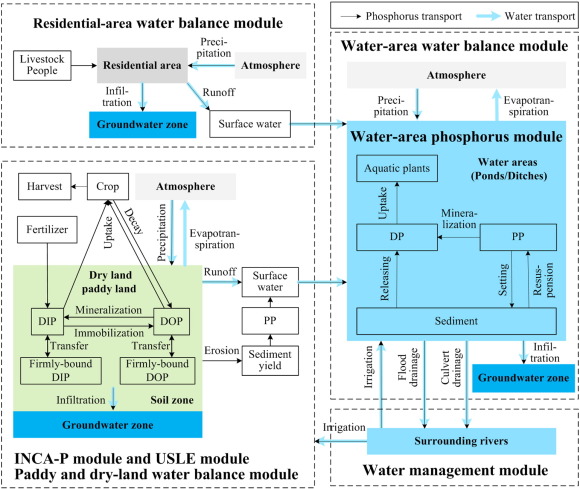How can we reduce phosphorus export from lowland polders? Implications from a sensitivity analysis of a coupled model
Phosphorus (P) export from lowland polders has caused severe water pollution. Numerical models are an important resource that help water managers control P export. This study coupled three models, i.e., Phosphorus Dynamic model for Polders (PDP), Integrated Catchments model of Phosphorus dynamics (INCA-P) and Universal Soil Loss Equation (USLE), to describe the P dynamics in polders. Based on the coupled models and a dataset collected from Polder Jian in China, sensitivity analysis were carried out to analyze the cause-effect relationships between environmental factors and P export from Polder Jian. The sensitivity analysis results showed that P export from Polder Jian were strongly affected by air temperature, precipitation and fertilization. Proper fertilization management should be a strategic priority for reducing P export from Polder Jian. This study demonstrated the success of model coupling, and its application in investigating potential strategies to support pollution control in polder systems.

Conceptual diagram for the tight coupling of the Phosphorus Dynamic model for Polders (PDP), Integrated Catchments model of Phosphorus dynamics (INCA-P) and Universal Soil Loss Equation (USLE). DOP, dissolved organic phosphorus; DIP, dissolved inorganic phosphorus; DP, dissolved phosphorus; PP, particulate phosphorus
